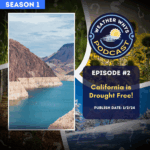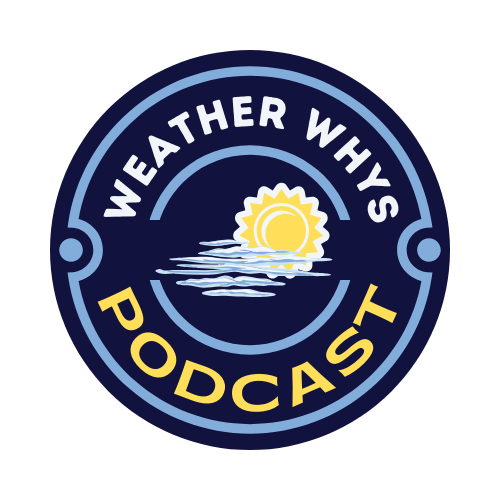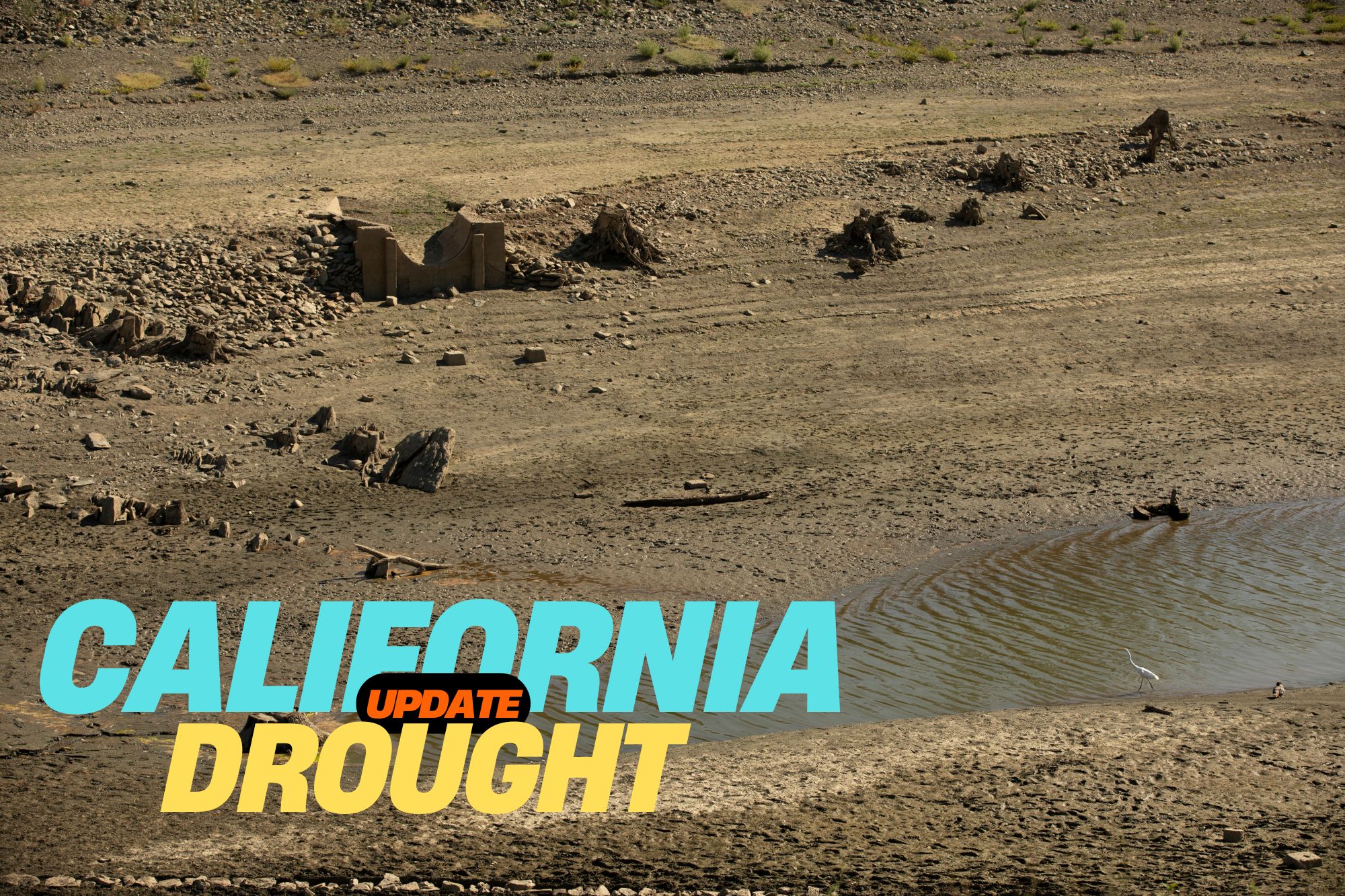
As the West Coast reels from a historic megadrought, California faces a pivotal question: Is the dry spell finally over? In this riveting episode of the Weather Whys Podcast, join host Ed Oswald as we delve into the recent meteorological phenomena that have soaked the Golden State.
Unpack the science behind atmospheric rivers, the lifeblood of California’s water supply, and understand their role in the dramatic resurgence of reservoirs like Lake Oroville. Discover how a tropical twist and heavy Sierra Nevada snows have contributed to the state’s water revival.
But has the deluge been enough to turn the tide on two decades of drought? We’ll explore the complexities of groundwater mismanagement and the precarious balance between replenishment and depletion. With the potential for another wet winter on the horizon, thanks to El Niño, California’s weather fortunes may be changing – but the long-term battle against drought and climate change continues.
[00:00:20] The sound of rain. Most Americans take this for granted, but rain is a valuable commodity for those living in the West. And more often than not, there’s too little of it to go around. That was the case across California over the past two decades. Say for a brief respite here and there, rainfall has averaged well below normal.
[00:00:39] This lack of rain Reservoir levels fell to the lowest recorded levels in 2023, and it seemed as if California and the rest of the West were heading for a serious water crisis. And then the rains came. Starting in late December, a series of strong storms pummeled California. Places that only see a few inches of rain in an entire year got that in a single storm.
[00:01:01] And it wasn’t just one, over a dozen storm systems struck the state between December and March. These storms found their way to California along an atmospheric river. Atmospheric rivers are narrow bands of wind that transport a lot of water vapor from the tropics to more temperate climates. They can be several thousand miles long and only tens to hundreds of miles wide.
[00:01:22] Most of you will know these events by their nickname, the Pineapple Express. The name comes from where it originates, near Hawaii. Reservoirs that have been critically low rose quickly. Perhaps the most significant change was Lake Oroville in Northern California. In September 2021, water levels dropped to 628 feet, their lowest level ever.
[00:01:41] By June of the following year, though, the lake was at 100 percent capacity, rising some 300 feet over that period. Historic snows in the Sierra Nevada were an added benefit. After years of little snowfall, some areas saw 200 300 percent of their normal snowfall, continuing into March and April in some places.
[00:02:01] And for the first time in years, a snowpack made it through the hot California summer, critical to keeping water flowing during those dry summer months. Then who would’ve expected a tropical system to strike Southern California? That was an added bonus and helped alleviate the long-term drought the state had been experiencing.
[00:02:18] So after all this, can we say that California’s mega drought is over? We’ll discuss that more after the break.
[00:02:26] The Weather Whys Podcast is brought to you by the Weather Station Experts. Home Weather station is a great way to expand your weather knowledge and the weather station experts has real hands-on reviews so you can make the right choice.
[00:02:37] Visit us on the web at theweatherstationexperts.com. Welcome back. Even with all the rain that California has been seeing, is the state truly in the clear? Let’s take a look at the bigger picture. First, ground water mismanagement has left some underground aquifers so dry that they’ve collapsed from the weight of the ground above them.
[00:02:58] In some areas of California, the ground is actually sinking because of this. Even in winter, as extreme as this past one, is not enough to replenish these aquifers. That will take multiple seasons. In other words, if the state swings back to dry conditions again, the megadrought will come roaring back. But a few things are working in the state’s favor.
[00:03:18] We’ve already mentioned Hillary. That storm gave unexpected replenishment to reservoirs across SoCal at a time when little, if any, rainfall typically falls. And while early on storms have targeted the northwest, another area experiencing extended drought. It appears at least a normal if not another wet winter is in store thanks to the effects of El Niño, according to meteorologists.
[00:03:40] That’s very good news. But we must keep in perspective the historic nature of this megadrought. Prior to last winter, climate experts found that the drought was more severe and long lasting than any other in the past 600 years. Then there’s the groundwater mismatchment. The ground can’t hold as much water as it used to due to the loss of those aquifers.
[00:04:00] Even if these were to refill completely, California would still have less water overall stored for the inevitable dry weather the states always experienced. Combined with the effects of climate change, the normal swings of California’s climate have become much more pronounced. While we’re apparently in a period of higher precipitation, it would have to continue past this winter to truly make a difference.
[00:04:21] So while California might be out of drought now by definition, the threat of it will always be around. But at least we’ve stepped back from the ledge, and Californians won’t be forced to make tough decisions. At least for the near future.
[00:04:42] You have just listened to the Weather Whys podcast. I’m your host, Ed Oswald.
[00:04:48] Weather Whys is a production of the Weather Station Experts and OzMedia. Today’s episode was produced by Derek Oswald and myself from our studios here in West Lawn, Pennsylvania. If you’d like to learn more about Weather Whys, please visit our website at weatherwhys.show. On our website, you can listen to this episode and any past episodes and also get in touch.
[00:05:10] We’d love to hear from you. Don’t forget to subscribe to Weather Whys to get the latest episodes as soon as we release them. You can find those links to Apple Podcasts, Spotify, Google, and more on our website as well. That’s all for today. Be sure to join us again next time when we take a look at winter’s hidden danger, the snowstorm.
[00:05:27] Thanks for listening, and stay weatherwise.
Key points
0:21 – California’s drought was setting records
1:01 – Over a dozen storm systems struck California between December and March
2:43 – Is the California megadrought really over?
3:42 – Keeping the historic nature of the megadrought in perspective
Show Notes
California’s drought was historic:
Called the Pineapple Express: “because moisture builds up in the tropical Pacific around Hawaii and can wallop the U.S. and Canada’s West Coasts with heavy rainfall and snow.”
Historic snows in the Sierra Nevada. Check out the difference in these satellite images!
California’s water problems – see this NYT article

